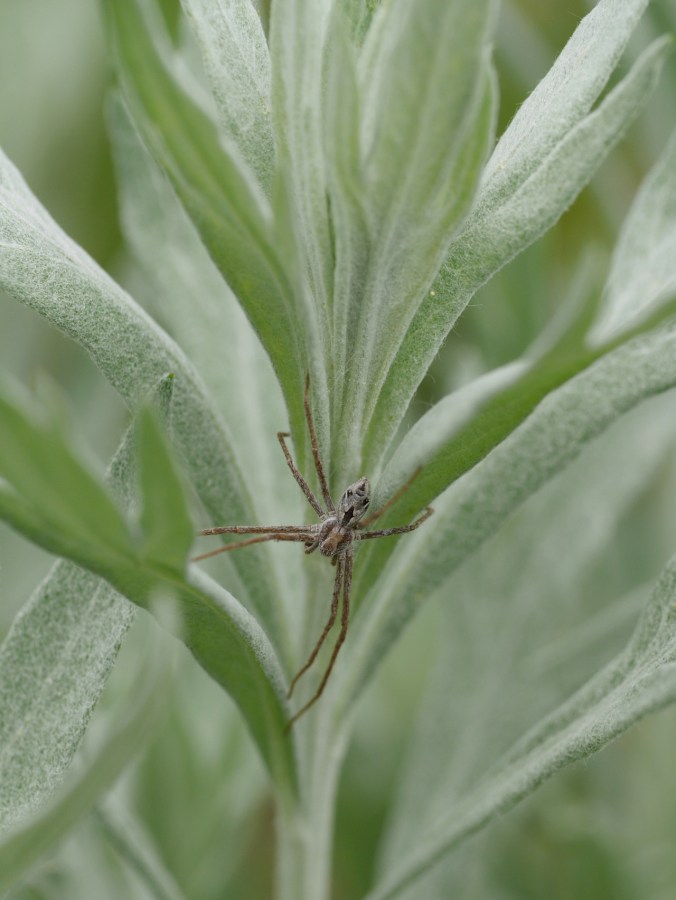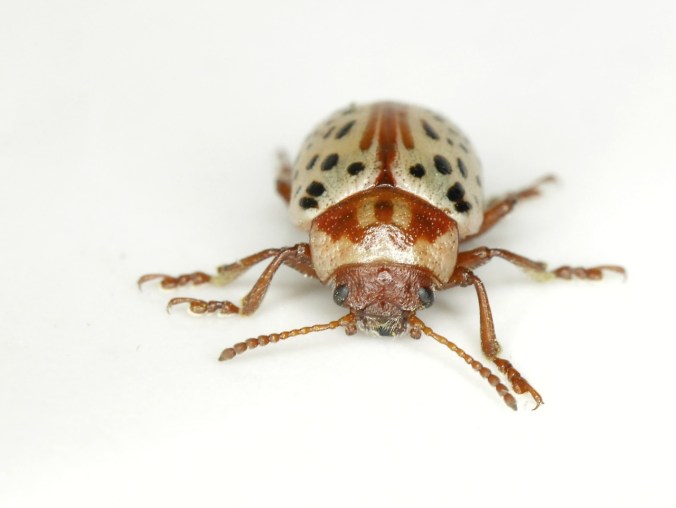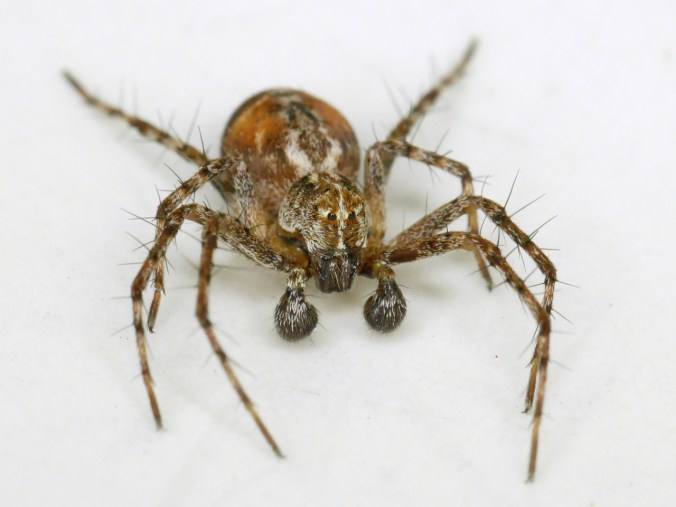
Philodromus histrio “Theatrical Running Crab Spider” Philodromidae
Blue Mountain National Recreation Area, MT
May 16, 2016
Robert Niese
I have no idea why this species of running crab spider has been given the species epithet “histrio.” In Latin, histrio means “actor” or “player.” Perhaps the arachnid’s propensity for waving its arms about whenever a predator (or camera) approaches earned it this descriptor. Or perhaps some early entomologist first encountered it engaged in an impressive act of twig-impersonation. In fact, when I first stumbled upon this individual, its legs were perfectly aligned in the shape of an X and pressed flat against the underside of this Artemisia stem, perhaps hoping to be mistaken for plant matter. Regardless, these Philodromids are widespread, common, and relatively recognizable. Look for them in northern latitudes and in the Rockies anywhere you might find weedy Asteraceous plants like Artemisia, Tanacetum, Centaurea, or Senicio (yes, I know, that encompasses just about every habitat).









